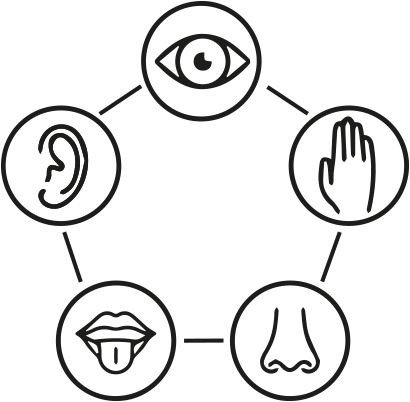Mapping one’s own perceivings
| Mapping one’s own perceivings
By Ilse van Lieshout, art therapist, teacher and researcher at Fontys/Zuyd |
| Intended learning outcomes (more on programme level)
Using all kinds of sensory mapping tools to make sensory perceivings visible. |
| Learning objectives (course specific)
Students get acquainted with sensory knowledge and their sensory awareness in the surrounding they are in. |
| Objective statement (course description)
Activities are based on viewpoint exercises from the dance world, and fragrance exercises. |
| Type of course
Skills course |
| Target group
BA, MA |
| Teaching method
Coaching, instruction |
| Activities
Let students stand in a space and then let them walk around. You can choose any space, outside or in the University or shopping center. On a stopping sign from the teacher, students stop and just look around. ‘This activity is to explore space and senses, ourselves in an environment’. Let students walk again through the space and pause on a mark. Let students close their eyes and point with eyes closed at an object in space they might or might not have seen. (the brain often sees things without you knowing this, so trust you intuition)
Repeat this again.
Then let students walk and stop, close eyes and let them explore touch. First how they stand upright and touch the floor, then slowly touch the fool with their hands. (all with eyes closed) (touch skills are sometimes forgotten, but hands see what eyes cannot)
Let students walk and stop, then let them focus on fragrance. How does the environment smell, where is a fragrance quite strong in the space.
Give students paper and pencils, let them map out the space from their senses. Let them explore the surroundings and pay attention to detail, let them draw or write down these details. Students should pay attention to all their senses.
With viewpoint exercises you can explore all senses and play with diverse activities. |
| Assessment of learning
The maps of students can be accompanied with written report or used in a presentation. |
| Additional biblio sources
https://en.wikipedia.org/wiki/Viewpoints
Overlie, M. (2016). Standing in space: The six viewpoints theory & practice. Fallon Press. |
